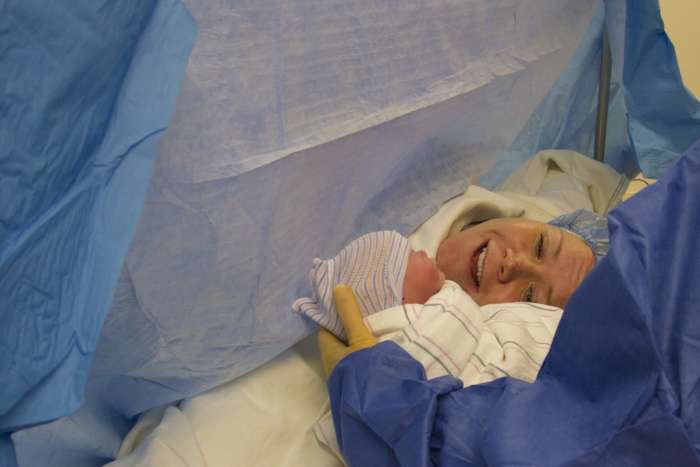Delivery
-
PregnancyBy Charise Rohm Nulsen
Cord clamping used to typically happen within the first 15-30 seconds after a baby was born, but today more and more moms are choosing delayed cord clamping. Use this guide to decide if delayed cord clamping is right for you and your baby.
-
Pregnancy
Jaundice is surprisingly common in newborns, especially pre-term babies. Find out what causes jaundice in newborns, the signs and symptoms to look out for, and how to treat it.
-
PregnancyBy Emily Wright, MSN, CNM
Looking for relief from labor pain? Learn about different types of labor medications and pain management options for childbirth.
-
Pregnancy
-
Pregnancy
Music can help ease your anxiety and help reduce the pain of your contractions. Here's how to create the best birthing playlist for you.
-
Pregnancy
-
PregnancyBy Rachel Sokol
Do you have questions about what is true and what isn't about C-sections? We interviewed two OB-GYN's for some expert advice on the myths and truths surrounding C-sections, so you can get the facts and be more informed when the time comes for your delivery.
-
PregnancyBy L. Elizabeth Forry
For some women, labor contractions feel like mild cramps or period pain, while others describe it as the most painful experience of their lives (hence the term ‘labor pains’). Is there a consensus on what you can expect? How can you tell the difference between labor pains and Braxton Hicks also known as false labor?
-
Pregnancy
The second stage begins when your cervix is fully dilated, your baby has moved deep into the pelvis, and you are ready to push. During the tiring second stage of labor, aid the effectiveness of your pushing with body positions such as kneeling, upright squatting, and being on all fours.
-
Pregnancy
Being active and changing your body's positions during the first stage of labor in your pregnancy can help with childbirth. See helpful active and supported positions using a birthing ball, chair, and cushions.
-
Pregnancy
During your baby's first medical exam around 12 hours after birth, the pediatrician checks everything from head shape to reflexes, such as sucking and grabbing. See what the check-up looks for.
-
PregnancyBy FamilyEducation Editorial Staff
Labor and delivery complications during childbirth can include premature labor, fetal distress, failure to progress, cord prolapse, shoulder dystocia, and postpartum hemorrhage. See how these issues are handled.
-
Pregnancy
Around 10 to 15 percent of all babies born in the US need to spend time in a neonatal intensive care unit (NICU). Babies most often need extra care to assist them with breathing until their lungs have matured. Find out what to expect during your hospital stay if your baby ends up in the NICU.
-
Pregnancy
Cesarean section, or C-section, is delivery of your baby through a surgical cut in the abdomen. Read up on emergency or elective types of cesarean, giving consent, anesthesia, risks, and recovery.
-
Pregnancy
Assisted birth uses forceps or a vacuum suction cup (ventouse extractor) to help deliver a baby vaginally. Get the facts on safety and complications, pros and cons, and side effects and pain relief.
-
Pregnancy
It's not uncommon to have labor induced, or started by artificial means. Learn about induction through softening your cervix, breaking your water, and using Oxytocin, Syntocinon, or Pitocin hormones.
-
Pregnancy
Babies in the breech position are bottom first. See how doctors turn the baby, address a breech position discovered during labor, and deliver a breech baby.
-
Pregnancy
Warm water helps some pregnant women deal with contractions in the second stage of labor. Hear one woman's story and get tips on a water birth and birthing tubs for a baby's delivery.
Subscribe to Family Education
Your partner in parenting from baby name inspiration to college planning.
Subscribe




















